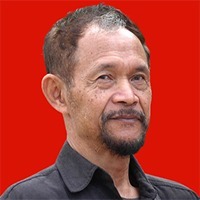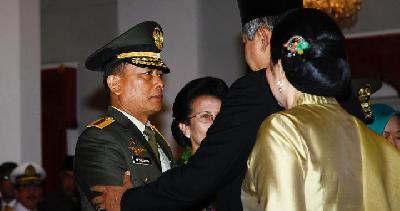Ondel-ondel
Monday, February 8, 2021
The ondel-ondel, which people say used to be part of high-class ceremony in old Jayakarta, is nowadays part of the life of the impoverished, who know they are not in the limelight.
arsip tempo : 171415171158.

ALMOST everyone ignores it. The ondel-ondel (giant puppet representing benign spirits and deceased ancestors in the Betawi culture—Ed.), which people say used to be part of high-class ceremony in old Jayakarta, is nowadays part of the life of the impoverished, who know they are not in the limelight.
But, like many things in life, the ondel-ondel’s appearance before us is not one-sided.
It marks ongoing tradition but also
...
Subscribe to continue reading.
We craft news with stories.
 For the benefits of subscribing to Digital Tempo, See More
For the benefits of subscribing to Digital Tempo, See More











